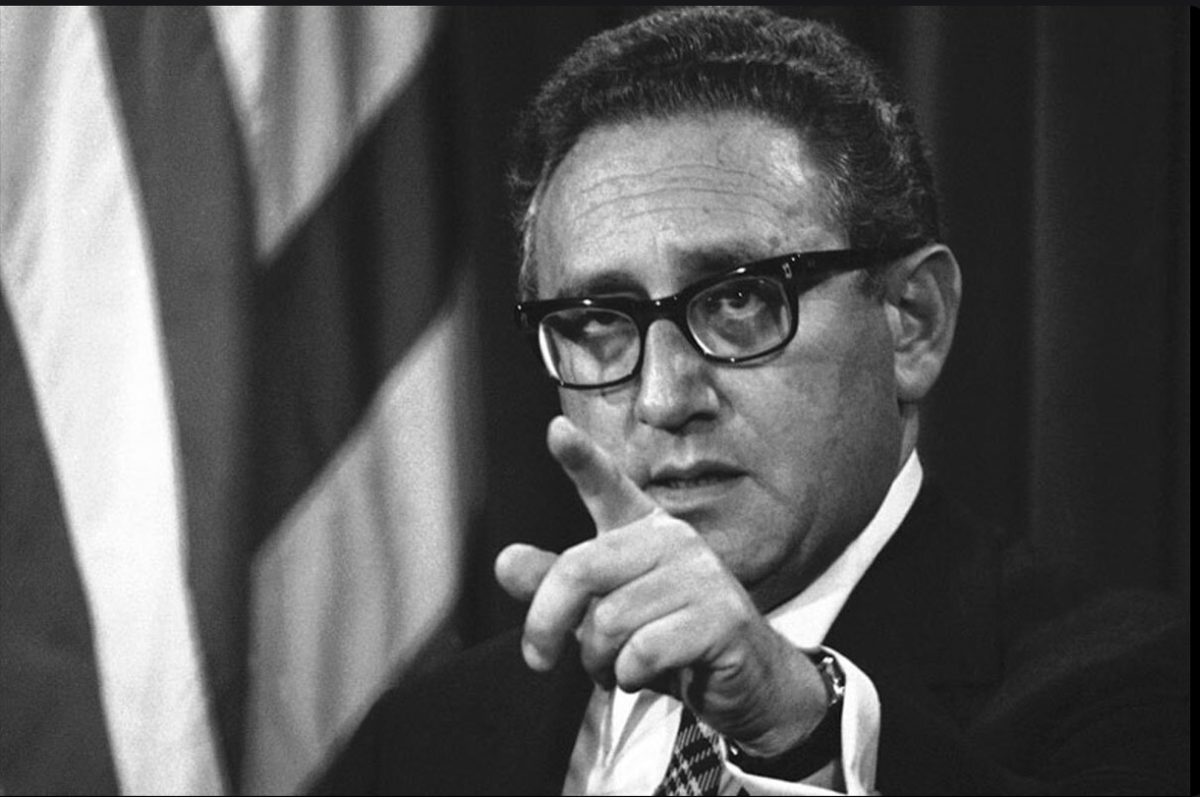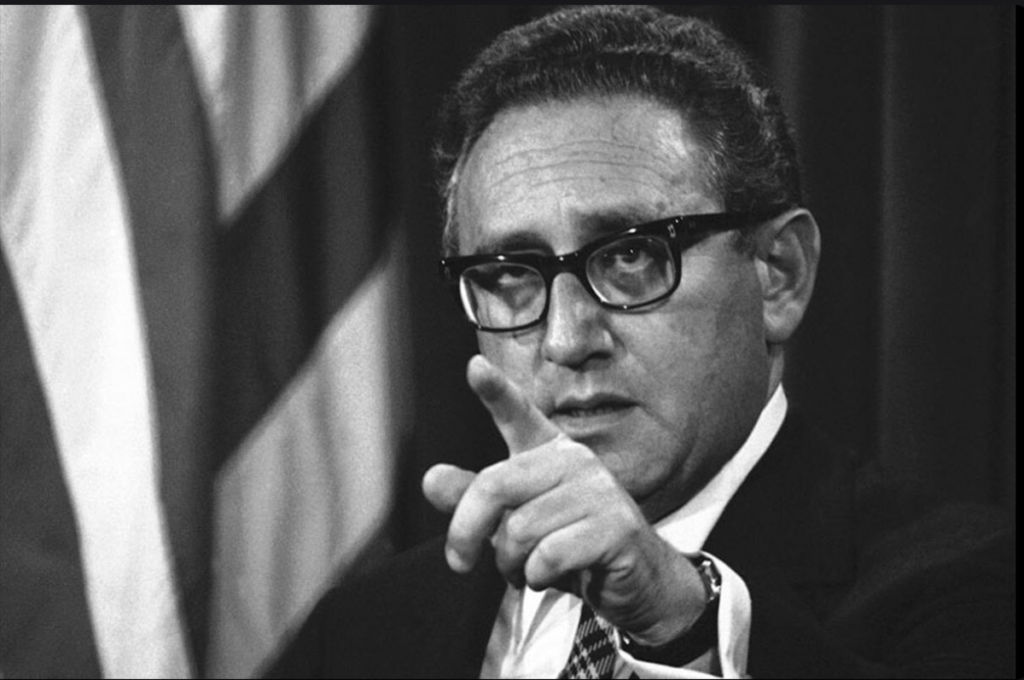Features
From Art to Diplomacy: How Jewish Leaders and Thinkers Shaped History and Modernity

In this article, we delve into the impact of Jewish public figures on the global stage, exploring their role in shaping political landscapes and cultural events
The Impact of Jewish Public Figures on World Politics and Culture
From prominent politicians to renowned artists, Jews have made significant contributions that have shaped our world.
With their diverse backgrounds and experiences, Jewish public figures have played a key role in promoting social change, advocating for human rights, and shaping cultural narratives. Their influence can be seen in a variety of fields, such as literature, art, music, and film, where Jewish artists have left an indelible mark on creativity and expression.
By exploring the contributions of Jewish public figures, together with the plinko game team, we aim to shed light on the enormous impact they have had on shaping our world.
Historical Background: The Role of Jewish Intellectuals and Leaders Throughout History
The historical narrative of Jewish intellectuals and leaders is rich and complex, woven into the fabric of many societies across the globe. From ancient times, Jews have contributed to various fields, including philosophy, science, and politics. Figures such as Maimonides and Spinoza have significantly influenced Western thought through their philosophical writings. These intellectuals not only shaped Jewish culture but also left a lasting mark on global intellectual history, challenging prevailing norms and encouraging critical thinking.
The struggle for social justice and human rights has often found expression through Jewish leaders. Throughout history, Jews have faced persecution and discrimination, which has fueled their commitment to advocating for justice. The Jewish experience of diaspora has led to a unique perspective on oppression and resilience, enabling Jewish leaders to become champions for the marginalized. Their contributions to movements for civil rights and social justice have been instrumental in shaping contemporary political landscapes, particularly in the United States and Europe.
Moreover, the integration of Jewish intellectuals into broader societal frameworks has fostered cross-cultural dialogues. Jewish figures have often acted as bridges between cultures, promoting understanding and collaboration. This historical backdrop sets the stage for examining the specific contributions of contemporary Jewish public figures in politics and culture, highlighting how their legacy continues to influence the world today.
Jewish Public Figures in Politics: Notable Examples and Their Impact on Global Affairs
Jewish politicians have played pivotal roles in shaping global politics, often taking on leadership positions that have allowed them to influence significant policy decisions.

One notable example is Henry Kissinger, who served as the United States Secretary of State and National Security Advisor. Kissinger’s approach to foreign policy, particularly during the Cold War, emphasized diplomacy and realpolitik. His efforts in negotiating peace agreements, such as the Paris Peace Accords, demonstrate the power of Jewish public figures in navigating complex international relations.

Another influential figure is Ruth Bader Ginsburg, the late Supreme Court Justice known for her staunch advocacy for gender equality and civil rights. Ginsburg’s legal opinions and dissents have had a profound impact on American jurisprudence, often pushing the boundaries of what is considered constitutional. Her legacy as a champion for women’s rights and social justice continues to inspire generations, illustrating the power of Jewish individuals to drive change within the legal and political arenas.
Additionally, figures like Benjamin Netanyahu have made significant contributions to political discourse on a global scale. As the Prime Minister of Israel, Netanyahu has been at the helm during crucial moments in Israeli history, navigating the complexities of Middle Eastern politics. His approach to security and foreign policy has sparked both support and controversy, reflecting the intricate dynamics of Jewish leadership in geopolitics. These examples underscore the diverse roles Jewish public figures have played in influencing global affairs, shaping policies that resonate far beyond their immediate contexts.
Jewish Public Figures in Culture: Contributions to Art, Literature, Music, and Entertainment
The cultural contributions of Jewish public figures are equally profound, spanning various artistic fields and leaving an indelible mark on global culture. In literature, authors like Philip Roth and Elie Wiesel have explored themes of identity, memory, and the human condition through their poignant narratives. Roth’s exploration of Jewish identity in America challenged stereotypes and opened dialogues about cultural belonging, while Wiesel’s memoirs on the Holocaust serve as powerful reminders of resilience and the importance of remembrance.

In the realm of music, Jewish artists have made significant contributions that transcend genres. From the classical compositions of Leonard Bernstein to the revolutionary sounds of Bob Dylan, Jewish musicians have shaped the musical landscape. Bernstein’s work in classical music and Broadway has left a legacy of artistic excellence, while Dylan’s lyrics reflect a deep engagement with social issues and human emotions. These artists not only entertain but also provoke thought and inspire social change through their craft.
Furthermore, the film industry has been significantly influenced by Jewish filmmakers and actors, with figures like Steven Spielberg and Natalie Portman leading the charge. Spielberg’s films often address complex moral dilemmas and historical narratives, while Portman’s work as an actress and director champions diverse stories and perspectives. Through their storytelling, these artists contribute to cultural discourse, emphasizing the importance of empathy and understanding in an increasingly divided world. The influence of Jewish public figures in culture is a testament to their creativity and commitment to social issues, enriching the global cultural landscape.
Controversies and Criticisms: Examining the Debates Surrounding Jewish Influence
Despite the significant contributions of Jewish public figures, their influence has not been without controversy. Debates surrounding Jewish influence often arise, particularly in the context of politics and media. Critics sometimes allege that Jewish individuals hold disproportionate power in various sectors, leading to accusations of conspiracy and manipulation. These narratives can perpetuate harmful stereotypes and contribute to anti-Semitic sentiment, highlighting the need for critical examination of such claims.
It is essential to differentiate between legitimate discussions about influence and the perpetuation of conspiracy theories that seek to scapegoat Jewish communities. Many Jewish public figures have risen to prominence through hard work, talent, and advocacy, rather than through nefarious means. Acknowledging their contributions while recognizing the complexities of their influence can foster nuanced discussions that combat anti-Semitism and promote understanding.
Moreover, the portrayal of Jewish individuals in media and popular culture can contribute to the reinforcement of stereotypes. It is crucial to critically engage with these representations and advocate for more diverse and accurate portrayals of Jewish life. Through education and dialogue, society can challenge misconceptions and celebrate the multifaceted contributions of Jewish public figures to politics, culture, and beyond.
The Jewish Diaspora and Its Impact on Global Networks
The Jewish diaspora has created a rich tapestry of experiences and connections that have influenced global networks. Historically, Jews have migrated to various regions, often forming tight-knit communities that have contributed to local cultures while maintaining their unique identity. This ability to adapt and thrive in diverse environments has enabled Jewish individuals to forge important connections across borders, creating a network of influence that extends beyond geographical boundaries.
The diaspora has facilitated the exchange of ideas, fostering a global dialogue that has enriched cultural and political landscapes. Jewish communities around the world often engage in philanthropy and social activism, addressing pressing issues such as poverty, education, and human rights. Organizations like the Jewish Federation and various international NGOs reflect the commitment of the Jewish diaspora to contribute positively to society, promoting social justice and intercultural understanding.
Furthermore, the interconnectedness of the Jewish diaspora has allowed for a robust exchange of knowledge and resources. Jewish public figures often draw on their diverse backgrounds and experiences, leveraging their networks to advocate for change on a global scale. This collaborative approach underscores the importance of community and solidarity in addressing complex challenges, highlighting the enduring influence of the Jewish diaspora in shaping global networks.
Case Studies: Examining Specific Individuals and Their Contributions
To illustrate the profound influence of Jewish public figures, we can examine specific case studies that highlight their contributions across various domains. One notable example is the late Shimon Peres, who served as the President and Prime Minister of Israel. Peres was a visionary leader known for his efforts in promoting peace in the Middle East. His role in the Oslo Accords exemplifies the potential for dialogue and compromise in resolving longstanding conflicts.
In the realm of art, Marc Chagall stands out as a revolutionary painter whose works encapsulate the essence of Jewish identity and culture. Chagall’s unique style, characterized by vibrant colors and dreamlike imagery, reflects his experiences as a Jewish artist navigating the complexities of the 20th century. His contributions to modern art have influenced generations of artists and continue to resonate in contemporary creative expressions.
Another significant figure is Ruth Messinger, a prominent advocate for social justice and former president of American Jewish World Service. Messinger’s work in international development highlights the intersection of Jewish values and global humanitarian efforts. Through her leadership, she has raised awareness about issues such as poverty and human rights, demonstrating the capacity of Jewish public figures to effect change on a global scale. These case studies underscore the diverse contributions of Jewish individuals, illustrating how their legacies continue to shape our world today.
The Power of Jewish Organizations and Lobbying Groups
Jewish organizations and lobbying groups have played a vital role in advocating for Jewish interests and promoting social change. Organizations such as the Anti-Defamation League (ADL) and the American Israel Public Affairs Committee (AIPAC) have been instrumental in shaping public policy and fostering community engagement. These organizations work tirelessly to combat anti-Semitism, promote civil rights, and strengthen ties between Israel and the United States.
The influence of Jewish lobbying groups extends beyond domestic politics, impacting international relations as well. AIPAC, for instance, has been a significant player in advocating for strong U.S.-Israel relations, leveraging political connections to promote policies that align with Jewish interests. The effectiveness of these organizations highlights the importance of collective action and advocacy in achieving political goals and addressing pressing social issues.
Moreover, Jewish organizations often serve as platforms for community engagement and activism. They provide resources for education, cultural programming, and social services, fostering a sense of community and belonging among Jewish individuals. By mobilizing collective resources and voices, these organizations play a crucial role in amplifying the contributions of Jewish public figures and advocating for diverse perspectives within the broader societal context.
Debunking Myths and Stereotypes: Separating Fact from Fiction
Addressing the myths and stereotypes surrounding Jewish influence is essential for fostering a more accurate understanding of their contributions. Misconceptions about Jewish individuals often stem from historical prejudices and societal biases, which can distort perceptions and promote harmful narratives. It is crucial to engage in open conversations that challenge these stereotypes and promote a more nuanced understanding of Jewish identity and influence.
Many myths surrounding Jewish individuals are rooted in conspiratorial thinking, suggesting that Jews exert undue control over various sectors, including finance, media, and politics. These narratives often lack empirical evidence and serve to scapegoat Jewish communities for broader societal issues. By critically examining these claims and promoting factual information, we can combat anti-Semitism and foster a more inclusive dialogue about the contributions of Jewish public figures.
Education plays a vital role in debunking myths and stereotypes. By promoting awareness of Jewish history, culture, and achievements, we can cultivate understanding and empathy. Initiatives that celebrate Jewish contributions to society can help counteract negative narratives and highlight the diverse perspectives within the Jewish community. Ultimately, fostering a culture of dialogue and education is essential for promoting inclusivity and understanding in our increasingly interconnected world.
Conclusion
The influence of Jewish public figures on global politics and culture is a testament to their resilience, creativity, and commitment to social justice. From shaping political landscapes to enriching cultural narratives, Jewish individuals have made significant contributions that continue to resonate today. Their diverse backgrounds and experiences have enabled them to navigate complex societal challenges, advocating for change and promoting understanding across cultures.
As we reflect on the ongoing influence of Jewish public figures, it is crucial to recognize the importance of diverse perspectives in shaping our world. The contributions of Jewish individuals serve as a reminder of the power of collaboration and collective action in addressing pressing issues. By embracing diversity and promoting dialogue, we can foster a more inclusive society that values the contributions of all individuals, regardless of their background.
In conclusion, the legacy of Jewish public figures is multifaceted and enduring. Their impact on global politics and culture underscores the importance of recognizing and celebrating diverse voices. By continuing to explore and appreciate these contributions, we can foster a deeper understanding of our shared human experience and work towards a more just and equitable world for all.
Features
Japanese Straightening/Hair Rebonding at SETS on Corydon

Japanese Straightening is a hair straightening process invented in Japan that has swept America.

Features
History of the Winnipeg Beach Synagogue: 1950-2025

By BERNIE BELLAN The history of the Winnipeg Beach Synagogue is a fascinating one. We have had several articles over the years about the synagogue in The Jewish Post & News.


In June 2010 I wrote an article for The Jewish Post & News upon the 60th anniversary of the synagogue’s opening. Here are the opening paragraphs from that article:
“Sixty years ago a group of Winnipeg Beach vacationers decided that what their vacation area lacked was a synagogue. As it happened, a log cabin one-room schoolhouse in the Beausejour area happened to be available.
“In due course, the log cabin was relocated to the corner of Hazel and Grove in Winnipeg Beach, where it stayed for 48 years.”

In December 1994 my late brother, Matt, wrote a story about the spraying of antisemitic grafitti on the synagogue which, at that time, was still situated at its original location on the corner of Hazel and Grove in the town of Winnipeg Beach:
“Two 16-year-olds spraypainted slogans like ‘Die Jews,’ ‘I’ll kill you Jews,’ and other grafitti in big letters on the beach synagogue.
“Jim Mosher, a news reporter for the Interlake Spectator in Gimli, said last Halloween’s vandalism against the synagogue wasn’t the first. In the late 1980s, he claimed, it was spraypainted with swastikas.
“Jack Markson, a longtime member of the Winnipeg Beach Synagogue, last week also said he could remember finding anti-Semitic grafitti spraypainted on the synagogue ‘a few years ago,’ and at least twice in the 1970s, when the cottage season was over.”

My 2010 article continued: “In 1998 the Town of Winnipeg Beach informed the members of the synagogue that the building would have to be hooked up to the town’s sewer and water system. Rather than incur the cost of $3-4,000, which was thought to be ‘prohibitive,’ according to longtime beach synagogue attendee Laurie Mainster, synagogue goers looked elsewhere for a solution.
“As a result, the board of Camp Massad was approached and asked whether the synagogue might be relocated there, with the understanding that the synagogue would be made available to the camp at any time other than what were then Friday evening and Saturday morning services.
“Over the years the ‘beach synagogue’ had come to be a very popular meeting place for summertime residents of Winnipeg Beach and Gimli. In fact, for years minyans were held twice daily, in addition to regular Saturday morning services. Of course, in those years Winnipeg Beach was also home to a kosher butcher shop.
“While the little synagogue, which measured only 18 x 24 feet, has gone through several transformations, including the move to Camp Massad, and the opening up to egalitarian services in 2007 (The move to egalitarian services was as much a practical necessity as it was a nod to the equality of women – the only Kohen present at the time was a woman!), it has always remained cramped at the best of times.

“In recent years the synagogue has seen the addition of a window airconditioner (although to benefit from it, you really have to be sitting just a few feet away), as well as a fridge that allows synagogue attendees to enjoy a regular Saturday morning Kiddush meal following the service.
“According to Laurie Mainster, the Saturday morning service has continued to be popular, even though many of the attendees now drive in from Winnipeg, as they have sold the cottages they once maintained.
“On the other hand, one of the side benefits to being located on Camp Massad’s grounds has been an infusion of young blood from among the camp counsellors.
“Since there is no longer a rabbi available to conduct services (Rabbi Weizman did lead services for years while he had a cottage at the beach), those in attendance now take turns leading the services themselves.
“Anyone may attend services and, while there are no dues collected, donations are welcome. (Donations should be made to the Jewish Foundation of Manitoba, with donors asked to specify that their donations are to be directed to the beach synagogue.)
“Mainster also says that the beach synagogue is now undergoing an expansion, which will be its first in 60 years. An entirely new space measuring 16 x 18 feet is being added – one that will allow for a real Kiddush area. (Until now, a table has been set up in the back of the synagogue and synagogue goers would help themselves to the buffet that is set up each Saturday during the summer. While pleasant enough, it will certainly be more comfortable to have an actual area set aside for the Saturday afternoon after service lunch.)
“As for dress, longtime attendee Abe Borzykowski (in an article written by Sharon Chisvin for the Free Press in 2007) remarked that ‘I don’t think there are many synagogues where people can attend in shorts, T-shirts and sandals and not feel out of place.’ “

As mentioned in that 2010 article, the beach synagogue at that time was about to undergo an extensive remodelling. Here is an article from a January 2011 issue that describes that remodelling process. The article was written by Bernie Sucharov, who has been a longtime member of the beach synagogue:
“The Hebrew Congregation of Winnipeg Beach made a major change to the synagogue this past summer. With the help of many volunteers, Joel Margolese being the project manager, the synagogue was expanded and an addition was built to handle the overflow crowds, as well as to add more space for the kiddush following services.
“The volunteers spent many Sundays during the summer months building the addition. Bad weather caused many delays, but finally the addition was completed one week before the official summer opening.
“The volunteers were: Joel Margolese, Gordon Steindel, Sheldon Koslovsky, Viktor Lewin, Harvey Zabenskie, Nestor Wowryk, Kevin Wowryk, Victor Spigelman, Jerry Pritchard, and David Bloomfield.
“On Sunday, June 25, 2010 a special ceremony was held to affix a mezzuzah to the front entrance door. Gordon Steindel had the honour of affixing the mezzuzah, which was donated by Sid Bercovich and Clarice Silver.
“Refreshments and food for the day were prepared by Phyllis Spigelman, also known as our catering manager. Throughout the summer, Phyllis, Lenore Kagan and other friends prepared the food for our kiddush.
“A sound system was donated by Arch and Brenda Honigman in memory of their father, Sam Honigman z”l. “The system was installed by Joel Margolese and Stevan Sucharov. This will allow the overflow crowd to hear the service in the new addition.
“There were also generous donations of 50 chumashim and an air conditioner. The chumashim were donated by Gwen, Sheldon and Mark Koslovsky. The air conditioner in the new addition was donated by Joel and Linda Margolese.
“The official opening of the synagogue for the summer took place on July 3, 2010. We had an overflow crowd of 70+ people.”

Since that 2010 major addition to the synagogue, it has also added a wheelchair ramp (although I’ve been unable to ascertain exactly when the ramp was built). Also, the synagogue also has its own outdoor privy now. (Attendees used to have to use facilities in Camp Massad.)
And, as already noted in article previously posted to this site (and which you can read at Beach Synagogue about to celebrate 75th anniversary), in recognition of that occasion, on August 2nd members of the synagogue will be holding a 75th anniversary celebration.
As part of the celebration anyone who is a descendant or relative of any of the original members of the first executive committee is invited to attend the synagogue that morning.
If you are a relative please contact Abe Borzykowski at wpgbeachshule@shaw.ca or aborzykowski@shaw.ca to let Abe know you might be attending.
Features
Kinzey Posen: CBC Winnipeg’s former “go-to guy”

By GERRY POSNER If former Winnipegger Lawrence Wall was the CBC go-to guy in Ottawa, CBC Winnipeg had its own version of a go-to guy for many years with none other than the very well known Kinzey Posen. Of course, many readers will recognize that name from his career with Finjan, the Klezmer group so famous across Canada and beyond. It has been written about Posen and his wife Shayla Fink that they have been involved in music since they got out of diapers. And, as an aside, their love and ability in music has now been transmitted to the next generation as in their son, Ariel Posen (but that’s another story).
Kinzey Posen (not to be confused with Posner, or maybe we are to be confused, but who knows for sure?), was a graduate of Peretz School, having attended there from nursery right until Grade 7, graduating in1966. That was followed by Edmund Partridge and West Kildonan Collegiate. Musically, he was in large part self taught. However, he did have some teachers along the way. After moving to Vancouver – from 1974-78, he had the chance to study acoustic classical bass with a member of the Vancouver Symphony Orchestra. When Kinzey lived in Vancouver, he also worked as a jazz musician.
Upon returning to Winnipeg, Kinzey enrolled as a mature student at the University of Winnipeg, where he obtained a Bachelor of Urban Studies degree. Although the degree was in no way connected to the career that followed, his attending the University of Winnipeg was critical to his connecting with the CBC. Why? you ask. Kinzey had a position after graduation working for the Institute of Urban Studies. While there, he met someone who invited him to work for the Department of Continuing Education as one of their program directors. At the time the Department of Continuing Education was located at 491 Portage Avenue, which was also known as the TJ Rice Building. The CBC also leased some space in the same building. According to Kinzey, the CBC part of the building “included HR, different shows and other support offices. Continuing Education was located in the basement and main floor and that’s where I worked.”
KInzey had long had an interest in the CBC, which made the fact that the CBC had some offices in the same building where he was working serendipitous. That Kinzey might be interested in visiting the CBC was not an accident. As a young boy he had a nightly connection to CBC, as it was his ritual to listen to CBC Radio (as well as all sorts of other radio stations across the USA) on his transistor radio every night in bed. He became enamoured of one particular CBC host, Bill Guest, so that when going to sleep, he imagined that he was Guest doing interviews with imaginary guests. That dream of working for CBC became a reality when he had a chance to do a one week gig with Jack Farr’s network program.
Kinzey took a week off from his Continuing Education job and spent five days at the CBC. That week was a training session for Posen, as he had to create ideas, research, pre-interview, write the script, and set up the studio for Farr’s interview. He was almost in his dream job – although not quite – since it was only for one week. His opportunity, however, came in 1988, when he was offered a one-year term as a production assistant – the lowest guy on the ladder, for a show called “ Simply Folk,” with the late Mitch Podolak as the host. Although he was indeed at the bottom as far as those working on the show were concerned, he took a chance and gave his notice to the U of W. The rest is history. In his new job, Kinzey learned how to become a producer. Lucky for him, at the end of the year, when the person he replaced was supposed to come back, she never returned (just like the song, “MTA,” by the Kingston Trio). At that point, Kinzey was hired full time at the CBC.
Kinzey was a fixture at the CBC for 27 years. During those years, Kinzey had the chance to work with Ross Porter, a respected former CBC host and producer, also with Karen Sanders – on the “Afternoon Edition.” One aspect of Kinzey’s job on the Afternoon Edition was to come up with ideas, mix sound effects, arrange interviews and music, to create a two-hour radio experience. In addition, he covered jazz and folk festivals and, as a result, was exposed to some of the best musicians in the world. With Ross Porter in the 1990s, he worked on a network jazz show called “ After Hours,” which was on from 8-10 PM five nights a week. Kinzey was involved with writing the scripts, picking the music, and recording the shows, as well as editing them and then presenting them to the network for playback.
Of course, over his career, Kinzey had many memorable moments. He told me about one of them. The story revolved around the National Jazz Awards one year in particular. The awards were to be broadcasted after the National News which, in those days, began much earlier in the evening, and were over by 8:00 pm. The legendary Oscar Peterson was lined up to play a half hour set at the awards, starting at 7:30. But, as Kinzey told me, Oscar Peterson had a “hate on” for the CBC ecause one of his recorded performances was wrongly edited and he refused to appear on CBC under any circumstances. As the time neared 8:05 PM, which was when the CBC was to begin its broadcast of the jazz awards, it became apparent that Oscar was not going to finish on time. As the producer of the awards show, Kinzey was tasked with telling Oscar Peterson to wrap it up and get off the stage. There was Kinzey Posen, a huge fan of Oscar Peterson, now faced with the prospect of telling Oscar – while he was still playing – with 500 people in the audience, to stop and get off the stage. Not often was or is Kinzey Posen frozen, but that was one such moment. There was one loud “Baruch Hashem” from Kinzey when Oscar completed his set literally just in time.
Clearly, Kinzey was part of a very successful run with After Hours as it was on the air for 14 years. It was easily one of the most popular shows on CBC Radio 2, and a winner of several broadcasting awards. Kinzey also played a major role in producing a two part documentary about legendary guitarist Lenny Breau.
When After Hours ended, Posen became one of the contributing producers to Canada Live and specialized in producing live radio specials for the network, such as the Junos, for CBC Radio One and Two. Needless to say, his career planted Posen in the world of some top notch musicians, including his time spent working with Robert Plant (Led Zeppelin), Dave Brubeck, Randy Bachman, Chantal Kreviazuk and a list of prominent names in the Canadian, American and European music spheres. Locally, the CBC came to refer to Kinzey as the Jewish expert. I would add music expert to that title.
After his 27 year run at the CBC – and before he fully retired, Kinzey went on to work for the Rady JCC as a program director for a year and a half. Of course, to say that Kinzey Posen is retired is a major contradiction in terms. You really can’t keep him down and he has his hand in a variety of programs and projects – most of which he remains silent about, as is his style.
When I realized the full depth and talent of Kinzey Posen, I quickly concluded that he must certainly be related to me. Even if he isn’t, I now tell people he is.
